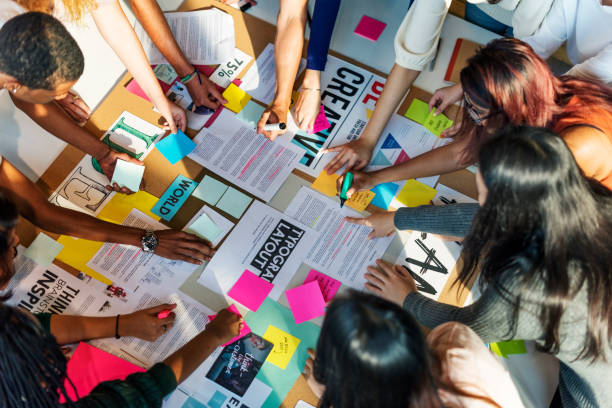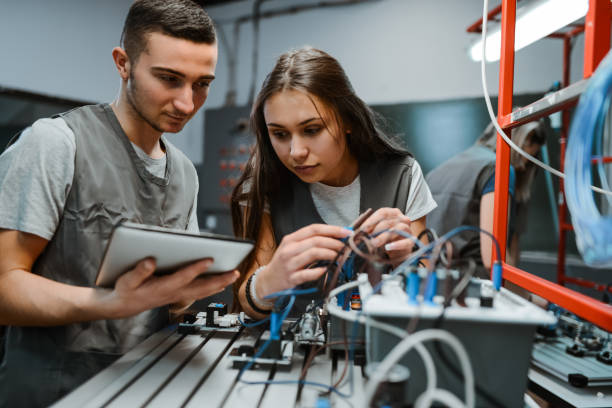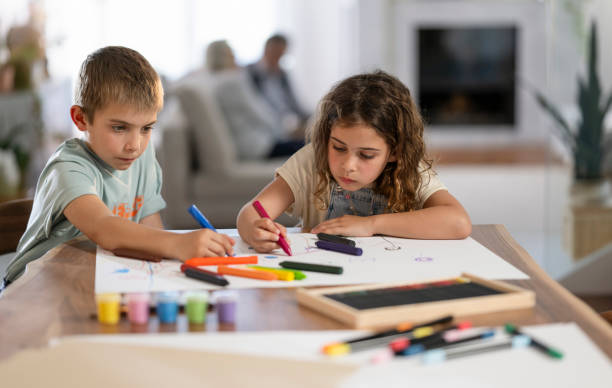Making learning a fun-filled experience requires a combination of creativity, orderly progress, and understanding of learners’ needs and goals. Here are some unique and mastermind tips on how to make learning more effective:
1. Use Active Learning Techniques

Prompt the students to be involved in the learning process instead of being passive receivers of information. Then try some group discussions/problem-solving/role-plays for them to get sense about the applicability of these concepts. The active participation will assist the students in gaining confidence, communication, and teamwork skills. Through practical dealing with problems, they get to know how to relate theory and practice. These interactive sessions promote creative and thought-provoking as well as make the classroom setting more alive and accommodating whereby all the learners can contribute and learn effectively through experience.
2. Use Multi-Sensory Approaches
Combine different senses to create powerful messages within short periods. Visual aids, auditory tools, and hands-on activities mean covering different learning styles in the classroom. This method of multisensation enables the students to receive the information better and retain it longer. When the learners hear, see, and feel lessons with the help of various senses, their interest and perception become exponentially greater. It also promotes teamwork, fosters enquiry, and enables every student to study in a way that suits him, which indeed makes the lessons significant.
3. Gamify Learning
Incorporate elements of fun and competition into lessons. Infuse quizzes, badges, or points for the motivation and benefit of learners and to keep lessons a little more interesting. Positive competition encourages the students to remain keen and motivated during the learning process. Complimenting the performance, even minor, gives a feeling of self-assurance and success. Such fun method facilitates not only active involvement but stimulates constant progress and interest in the learning objectives.
4. Use Technology Sleekly

Impress today’s students with exciting new tools like virtual reality, interactive whiteboards, and online platforms that will surely make lessons appear lively and fun. Kahoot, Mentimeter, etc., can add interactivity.
5. Make Lessons Relevant through Real Life Applications
Make the students aware of the events that apply in the real life of the learned lessons. By doing this, they will see the relevance and learn the information without much hassle. Application of lessons to real life experiences enables the students to relate better theory with practice. It renders learning meaningful, more recallable and it is more easily remembered and it makes them willing to use the acquired knowledge with confidence in the real life contexts.
6. Facilitate Cooperative Learning

Provide opportunities for group work or peer learning. Peer learning enhances collaboration among learners and creates opportunities for students to share ideas in a manner that enhances communication skills and exposes them to different perspectives.
7. Provide them with Personal Feedback
Provide feedback to learners about their tasks and activities conducted in your classroom. Make the feedback point-based and directed toward the growth of learners. Proper feedback enable students realize their positive points and also knows about their area of weekness. Positive feedback increases motivations and confidence. The Point -based feedback enable learners to monitor their progress which will motivate them to work harder than before.
8. Chunk Information
Break up complex topics into smaller, manageable parts. Chunking helps learners focus better and fight cognitive overload
9. Encourage Curiosity and Questions
Make learners feel free to ask questions, and foster a climate that allows such questions. This generates critical thinking and deeper processing of the material. When learners feel comfortable expressing their thoughts and doubts, learning becomes more interactive and meaningful. Open discussing and dialouge helps build confidence and curiosity. Here’s the corrected version of your sentence.This approach also provides every learner with an opportunity to express their views easily, which helps in solving their problems.
10. Practice and Repetition
Allow constant reinforcement of learning through practice. Techniques such as spaced repetition also serve the purpose of long-term retention of the information by learners.
11. Provide a Positive Learning Atmosphere
Create a learning environment that is motivational and devoid of stress. In confidence-boosting, positive atmospheres, learners feel easier and can learn better.
12. Include Storytelling
Introduce a story to lessons to make concepts more engaging and learners more relatable to them. Stories are easier recalled and usually strike chords with emotion.
13. Foster Reflection
Prompt reflection after the learning in every Far side-of-the-table meeting to remind the learner what he/she has learned. It consolidates what has been learned and licenses for improvement on specific features that may need further work.
Bringing all of these strategies together will allow you to create lessons that are effective, inspiring, and enjoyable for the learners.



Pingback: Boosting Crop Production: Best tips for Higher Yields – TipsMasterMind
Pingback: Unique and Detailed Study Tips for Effective Learning – TipsMasterMind
Pingback: Conflict Resolution Strategies: A Comprehensive Guide – TipsMasterMind
Pingback: Work from home productivity tips – TipsMasterMind
Pingback: Tips how to write engaging and attractive article – TipsMasterMind